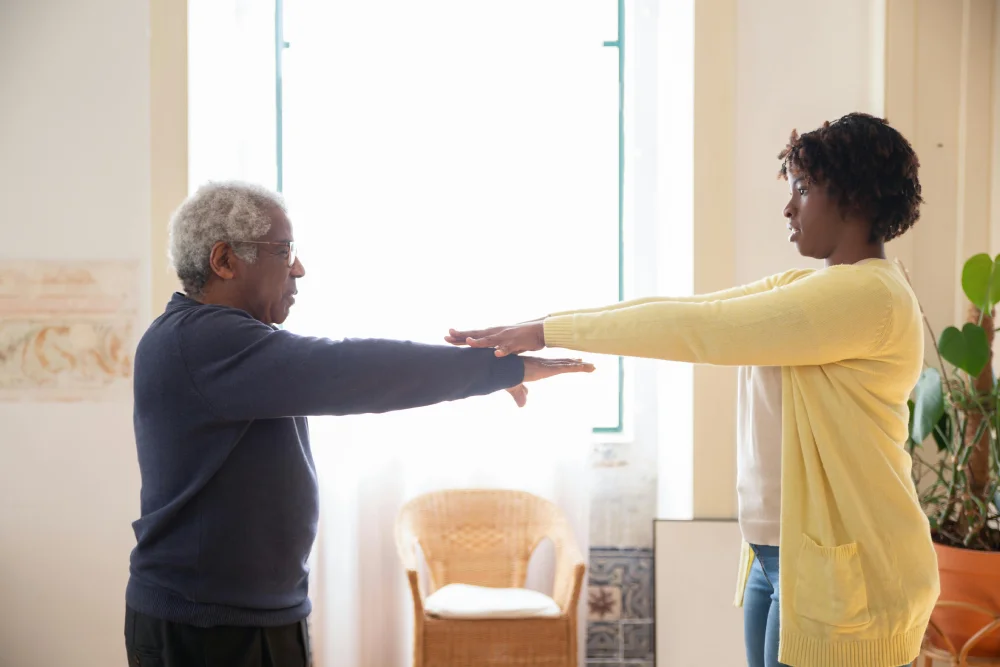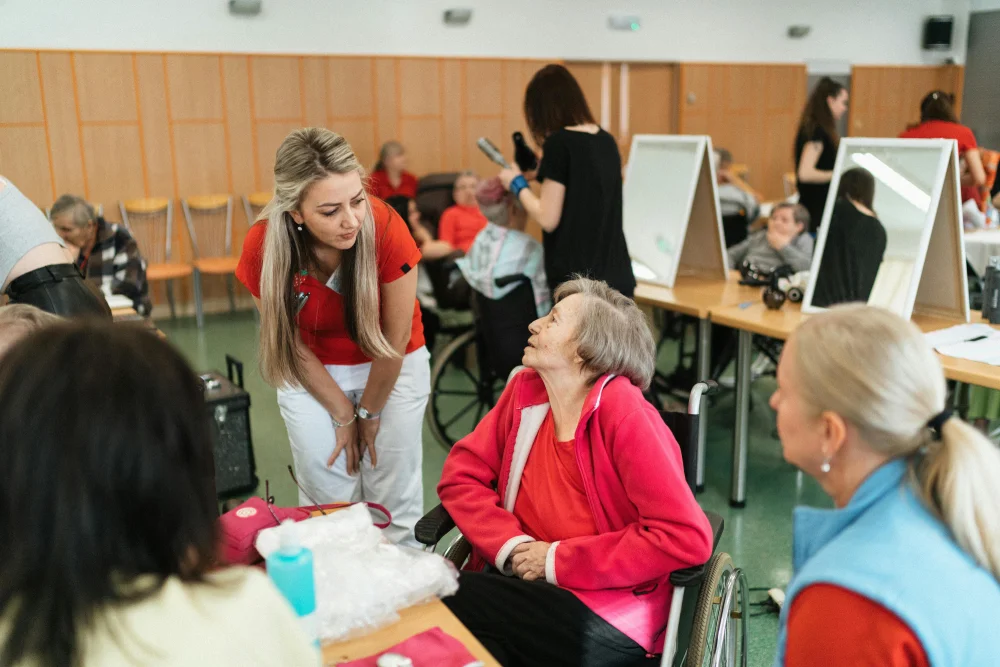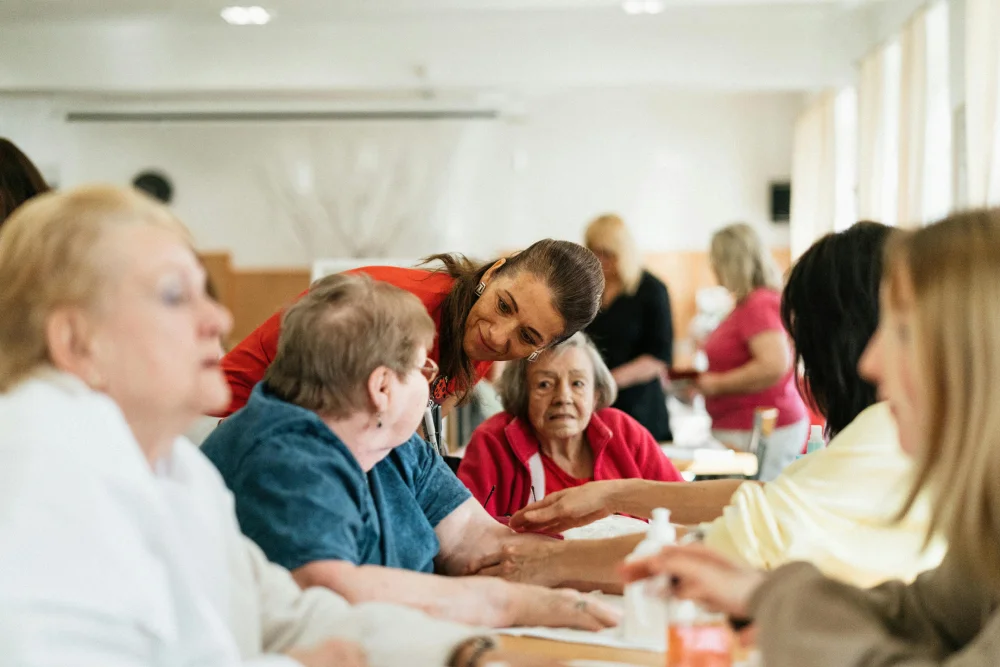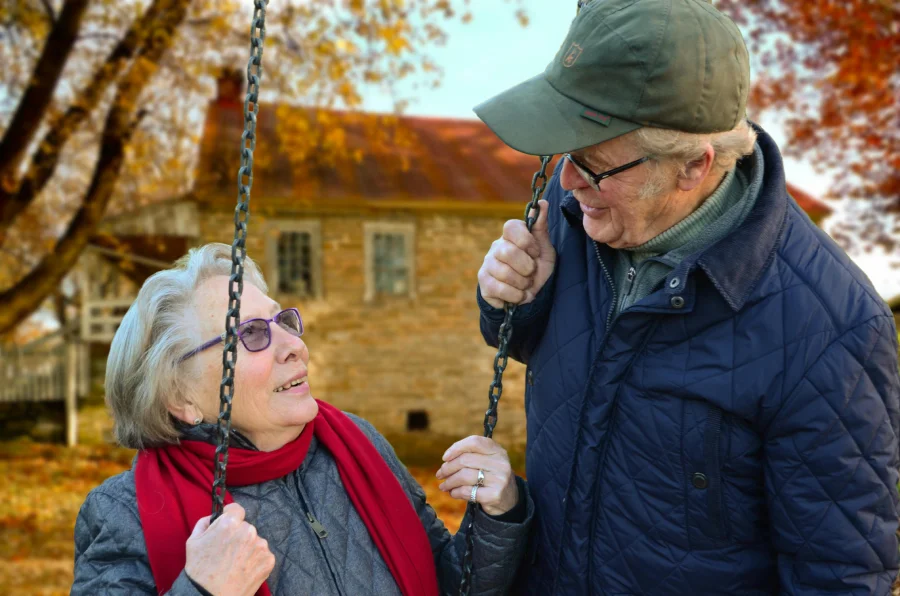Did you know that staying active as you age is important for your mental and physical health? Not only can this help to reduce your risk of serious health problems (like heart disease and stroke), but it can also help to reduce your fall risk. It’s also a great way to socialise and meet new people.
With most adults not spending enough time exercising and staying active, getting started can feel daunting – particularly if you’re older. In this article, we’ve taken a closer look at how you can build activity into your day.
The passionate myCare team is committed to delivering exceptional care at home, allowing clients to remain in a place that is comfortable and familiar for as long as possible. If you would like to learn more about supported living or care at home, get in touch with us today.

What are the physical activity guidelines?
According to the NHS, adults who are aged 65 years and over should aim to:
- Be physically active every day – even light activity counts.
- Focus on activities that improve strength, balance, and flexibility at least 2 days per week.
- Do at least 150 minutes of moderate intensity activity or 75 minutes of vigorous intensity activity or a combination of both per week.
- Try to reduce the time spent sitting or lying down, and break up long periods of inactivity with some movement.
If you haven’t exercised for some time or if you have medical problems or concerns, be sure to speak with your GP before adding physical activity to your daily routine.
What is light-intensity activity?
This covers any activity that isn’t sitting or lying down. It might include getting up to make a cup of tea, moving around your home, walking at a slow pace, cleaning and dusting, vacuuming, making the bed, and standing up.
What is moderate-intensity activity?
This is any activity that will raise your heart rate, make you breathe faster, and make you feel warmer. A good way to tell if an activity is moderate intensity is if you can still talk but you’re unable to sing. It might include walking for health, water aerobics, riding a bike, dancing for fitness, pushing a lawnmower, or hiking.
What is vigorous-intensity activity?
This is any activity that makes you breathe hard and fast. You should not be able to say more than a few words without pausing for breath. It might include running, aerobics, swimming, riding a bike fast or on hills, playing football, hiking uphill, or martial arts.
If you are not already an active person, you should not attempt vigorous intensity activity off the bat and should seek medical advice.

Physical activity as a social support
Older adults should consider group-based physical activity (such as exercise classes, walking groups, or creating a ‘buddy system’) so that they can also benefit from the social aspect of keeping active. It provides opportunities for social engagement, friendship, and even emotional support.
This can be particularly useful for older adults who live by themselves, are otherwise more isolated, or who need motivation in working towards their 150 hours per week of moderate intensity activity.
How do I get started?
Getting active can seem daunting at first, so it’s a good idea to start small and gradually build up your activity levels. Look for ways that you can incorporate activity and/or exercise into your daily routine.
Some ways to achieve this include:
- Setting an alarm that reminds you to get up and stretch or walk around if you spend a lot of time sitting.
- Walking to the shops instead of driving, or choosing a parking spot further away from the entrance if you have to drive.
- Using the stairs instead of lifts or escalators.
- Doing more housework or gardening (ask your care worker to support you in this).
- Head out for a walk first thing in the morning or after dinner.
Once you’re doing these sorts of activities, it will feel easier to add in proper exercise (such as joining a class or doing some gentle exercises at home).
Can I exercise if I have a health condition?
While living with a health condition can make being active more challenging, it doesn’t necessarily mean that it’s impossible. You just need to find what works for you.
Consider when and where you can get active, the symptoms of your condition (and the impact they have on being active), and any medical advice you’ve been given. Speak with your doctor for the best advice on how to exercise safely.
And remember that you will have good days and bad days. Some days, your body may tell you that you need to do less or even nothing at all, and that’s completely okay.

Don’t let aging keep you from being active
Maintaining an active lifestyle is important, even as we age.
You should aim for 150 minutes of moderate intensity activity per week, but if you’re new to exercise, it’s okay if you can’t reach it straight away – just try to work towards it.
The dedicated team at myCare encourages clients to remain active where possible and supports them in doing so where possible, including helping them to maintain their independence and taking them to classes (depending on your chosen package).
Please get in touch if this sounds like something you or a loved one could benefit from.





